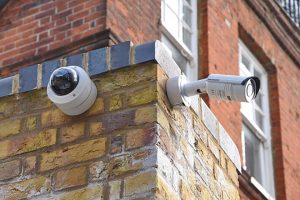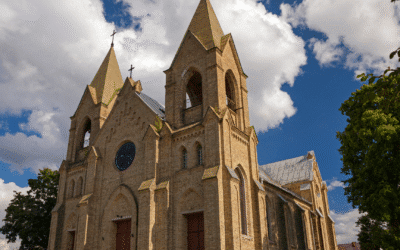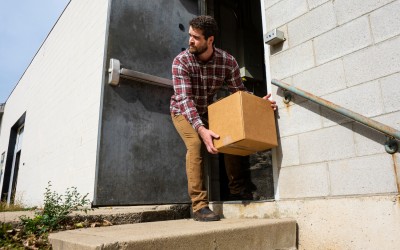 In today’s world, where security is of paramount importance, having a reliable surveillance system is essential for both residential and commercial properties. One crucial aspect of any surveillance system is the choice between bullet cameras and dome cameras. These two types of security cameras have their own unique features and benefits. Understanding the differences between them can help you make an informed decision about which type is best suited for your specific needs.
In today’s world, where security is of paramount importance, having a reliable surveillance system is essential for both residential and commercial properties. One crucial aspect of any surveillance system is the choice between bullet cameras and dome cameras. These two types of security cameras have their own unique features and benefits. Understanding the differences between them can help you make an informed decision about which type is best suited for your specific needs.
Bullet Cameras: The Visible Deterrent
Bullet cameras are aptly named due to their cylindrical shape, resembling a bullet casing. These cameras are designed to be noticeable and act as a visual deterrent to potential intruders. They are commonly used in outdoor settings but can also be installed indoors. Here are some key advantages of bullet cameras:
Long-Range Vision
One of the main strengths of bullet cameras is their ability to capture clear images over long distances. With a narrow field of view, bullet cameras can zoom in on specific areas, making them ideal for monitoring large spaces such as parking lots or expansive backyards. If you need to capture details like license plates or identify individuals from a distance, a bullet camera is an excellent choice.
Ease of Installation
Installing a bullet camera is relatively straightforward, thanks to their simple design and mounting options. These cameras are typically mounted on walls, and some models come with a mounting handle that allows for easy adjustment of the camera lens. The simplicity of installation ensures that the camera is properly positioned for optimal coverage, reducing the risk of blind spots in your surveillance system.
Visible Presence
The prominent design of bullet cameras serves as a visual deterrent to potential intruders. Research has shown that the mere presence of security cameras can significantly reduce the likelihood of criminal activity. By installing bullet cameras in visible locations, you send a clear message that your property is under surveillance, discouraging trespassers and enhancing overall security.
Weatherproof and Resilient
Bullet cameras are built to withstand various weather conditions, making them suitable for outdoor use. They are often equipped with a protective lip at the tip of the camera lens to minimize glare and shield against rain or snow. Additionally, bullet cameras are generally more resistant to vandalism compared to dome cameras, as their design offers fewer opportunities for tampering.
While bullet cameras offer several advantages, there are a few considerations to keep in mind. Their visible presence may not be suitable for situations where discreet surveillance is desired. Additionally, their narrow field of view may not be ideal for monitoring wide areas or capturing a comprehensive view of a space.
Dome Cameras: The Discreet Surveillance Solution
Dome cameras derive their name from their dome-shaped housing, which encapsulates the camera unit. These cameras are commonly used in both indoor and outdoor settings and offer unique features that make them an excellent choice for specific surveillance needs. Here are the key advantages of dome cameras:
Discreet Design
One of the primary advantages of dome cameras is their discreet appearance. Their minimalistic design allows them to blend seamlessly into various environments, making them less noticeable to individuals being monitored. This discreetness is particularly useful in settings where people may not expect surveillance cameras, such as front doors, churches, or areas where minimizing intrusion is essential.
Wide Field of View
Dome cameras are known for their ability to capture a wide field of view. Equipped with a varifocal lens, these cameras offer flexibility in adjusting the camera lens to the desired distance. The dome-shaped housing also allows for a wider angle of coverage, as the lens can be moved within the dome structure. This versatility makes dome cameras suitable for monitoring larger areas or achieving panoramic surveillance.
Durable and Vandal-Resistant
Dome cameras are designed to withstand harsh conditions and resist vandalism. The protective dome cover shields the camera lens from physical damage, increasing its durability. Some dome cameras also come with vandal-proof features, including IK10-rated enclosures that can withstand external mechanical impact. This resilience ensures that the camera remains operational even in challenging environments.
Inconspicuous Monitoring
The discreet design of dome cameras makes it difficult for potential intruders to determine the direction in which the camera is pointing. This uncertainty can act as a powerful deterrent against criminal activity. Dome cameras are particularly effective in retail settings, where their inconspicuous nature can help deter shoplifting and protect merchandise.
While dome cameras offer many advantages, they may have limitations when it comes to long-range monitoring. Their wider field of view may result in less detailed images when zoomed in on distant objects. Additionally, repositioning dome cameras can be more challenging compared to bullet cameras, requiring the camera to be remounted if the field of view needs adjustment.
Choosing the Right Camera for Your Needs
When deciding between bullet cameras and dome cameras, it is crucial to consider your specific surveillance requirements. Understanding the differences between the two can help you make an informed decision. Here are some factors to consider:
Area Coverage and Range
If you need to monitor a wide area or require long-range vision, bullet cameras are the better choice. Their ability to capture clear images from a distance makes them suitable for scenarios where detailed object identification is crucial.
On the other hand, if you prioritize wide-angle coverage and discreet surveillance, dome cameras are the preferred option. Their inconspicuous design and wide field of view make them ideal for monitoring larger spaces or achieving panoramic surveillance.
Visibility and Deterrence
Bullet cameras excel in providing a visible deterrent to potential intruders. Their conspicuous design sends a clear message that the area is under surveillance, deterring criminal activity. If you want to emphasize the presence of security cameras and create a strong visual deterrent, bullet cameras are the way to go.
Dome cameras, on the other hand, offer a more discreet approach to surveillance. Their inconspicuous design makes them suitable for settings where minimizing intrusion is essential, such as in retail environments or areas where people may not expect surveillance cameras.
Installation and Adjustability
Bullet cameras are generally easier to install, thanks to their straightforward mounting options. They often come with a mounting handle that allows for easy adjustment of the camera lens, ensuring optimal positioning. This ease of installation makes bullet cameras a convenient choice for both DIY enthusiasts and professional installers.
Dome cameras, while slightly more challenging to install, offer flexibility in terms of placement. They can be mounted on ceilings or walls, providing versatility in positioning and coverage. However, adjusting the field of view may require remounting the camera, making it less convenient for frequent adjustments.
Environmental Considerations
Both bullet cameras and dome cameras are designed to withstand various weather conditions. They are weatherproof and can operate in extreme temperatures, ensuring reliable performance in outdoor environments. However, it is essential to choose cameras with the appropriate Ingress Protection (IP) ratings to ensure their suitability for specific environmental conditions.
When it comes to choosing between bullet cameras and dome cameras, there is no definitive answer as to which is better. Each type has its own advantages and considerations, and the right choice depends on your specific surveillance needs. Understanding the differences in design, field of view, visibility, and installation can help you make an informed decision.
In many cases, a combination of both bullet and dome cameras can provide comprehensive coverage and maximize the benefits of each type. By strategically placing cameras throughout your property, you can ensure optimal surveillance coverage and enhance overall security.
Ultimately, the most important factor is selecting a reliable and reputable surveillance system provider. They can guide you in choosing the right cameras, ensuring proper installation, and providing ongoing support to maintain the integrity of your security system.
Investing in a robust surveillance system tailored to your needs is an essential step in protecting your property, deterring criminal activity, and providing peace of mind. Choose wisely, and rest assured knowing that you have taken proactive measures to safeguard what matters most to you.
Contact Us (877-762-6460) for a free consultation!
View Past Projects
—
 About Facility Protection Group
About Facility Protection Group
Facility Protection Group is a Certified Systems Integrator based in the Southeastern United States, specializing in electronic security services supporting both traditional and cloud based Access Control (Card Access), Video Surveillance / CCTV, Audio / Video Intercoms, and Intrusion Alarm Systems. Founded in 2018 and located in Tampa, Florida; Facility Protection Group has assembled a team that has a tremendous wealth of industry knowledge and experience.

 About Facility Protection Group
About Facility Protection Group

